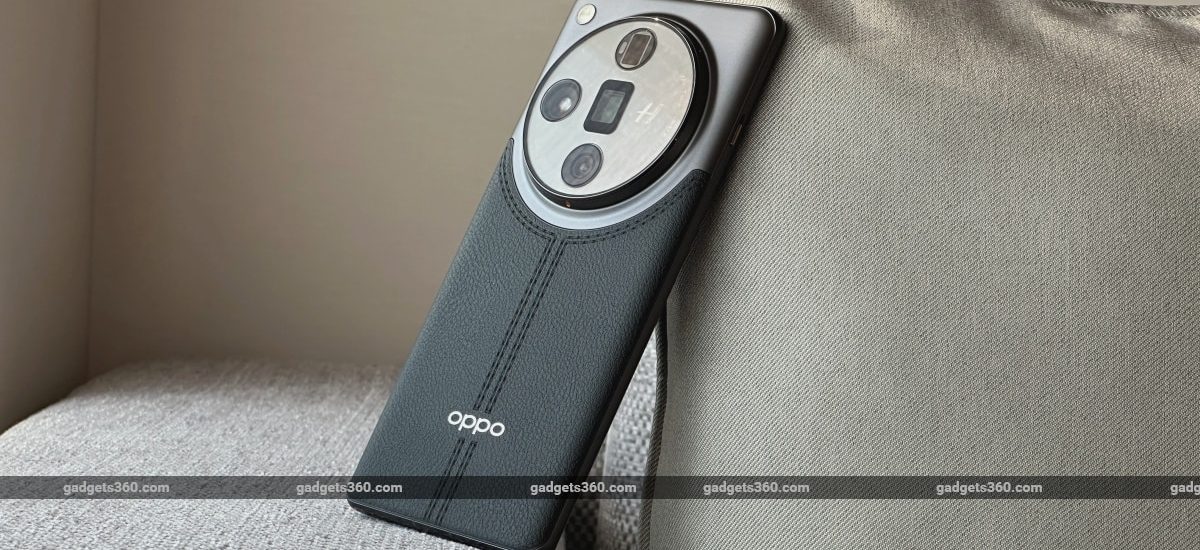



After withdrawing its Find X series of camera-focussed premium phones from India in 2020 (after the launch of its Find X2), Oppo seems to have suddenly become interested in the ultra-premium segment once again. As brands like OnePlus and Oppo (and
The default Auto camera mode is more colour accurate than the Auto Master mode which is more focussed on mimicking a Hasselblad camera (tap image to expand)
However, the Auto Master mode has some default presets for sharpening and vignette which according to Oppo replicates the output of the Hasselblad’s X2D 100C camera. While I liked the colour output and sharpness from both the Auto and (Auto) Master mode, I found that the Auto mode does a better job of accurately representing a given scene. The Auto Master mode adds a lot of emotion by adding contrast but also tends to tone down the colours quite a bit. These are better suited for Instagram uploads without any editing whatsoever.
The Oppo Find X7 Ultra manages good zoom performance till 30X (tap to expand image)
The rather versatile camera system is not really focussed on zoom performance at the far end but on delivering rock-solid imaging between 0.6X and 6X (and all stops in between). The camera system managed good quality photos till 10X zoom. Beyond this point resolved details start to take a hit but the camera holds it all together till 30X zoom. Beyond this zoom level, images end up looking flat with textures appearing like paintings. Zoom performance is good even in low light but only up to 6X, which is the optical zoom limit.
Primary camera performance in daylight is near flawless (tap image to expand)
Colours appear quite natural despite odd indoor lighting conditions (captured using the 3X telephoto camera) (tap image to expand)
The primary camera captures very detailed images with excellent colour reproduction and dynamic range no matter the lighting condition. Despite the binned 12-megapixel resolution, there’s plenty of room to go pixel peeping as image sharpening is also well under control.
The 3X and 6X telephoto cameras do a fantastic job at their native focal lengths. Details are spot on and not oversharpened and the autofocus is also instantaneous even in dim lighting, provided your subject is kind of steady and not in motion. Both cameras being periscope telephotos can also shoot closeups, which pack in a ton of detail right when you need it. One detail that I noticed was the constant auto-switching to 3X when shooting using the 6X camera. This only happens when shooting in low light (if the lighting conditions are too dim) and you will notice a deterioration in overall quality when this happens. Switching to Portrait mode, edge detection is not flawless, but on par with the competition. Selfies come out well in all lighting conditions with decent edge detection when captured in Portrait mode.
The Find X7 Ultra performs really well with close-up and macro photography (tap to expand image)
The 0.6X ultra-wide also performs on par with the competition with good resolved detail and textures, but has limited dynamic range meaning there’s less detail especially in the shadows. Since Oppo did not hold back on camera hardware, this camera also packs in autofocus letting me click some excellent macro shots.
The Find X7 Ultra’s ultrawide camera does a really good job when capturing low-light photos (tap image to expand)
Selfies captured by the Find X7 Ultra show good detail and edge-detection (tap image to expand)
While the camera performance hits above the belt, video performance was also equally impressive. Oppo’s Cinematic mode however still needs a lot of work with edge detection. The phone is capable of capturing 4K 60fps video on all 4 cameras. Colour consistency is on point between all four cameras, but dynamic range suffers a bit with the ultra-wide camera. Overall video recording capability is quite impressive and comes close to an iPhone 15 Pro Max, but it’s still not there yet and you notice this mainly while panning. Regardless, this is some of the best footage I’ve come across on an Android smartphone lately, so it is right there at the top.
Oppo’s gamble by going with two periscope telephoto cameras has surely paid off this year and it makes the Find X7 Ultra a solid upgrade even if you happen to own a Vivo X100 Pro (Review) or a Google Pixel 8 Pro (Review) and want to get a taste of the ‘Ultra’ club. While I haven’t got a chance to compare its image quality, the Find X7 Ultra does get many things right when compared to the competition.
It has a very premium and unique looking design which stands out from the glass laden flagships from competing brands, cameras are top notch, and the phone also offers fast wired and wireless charging which can put Samsung and Pixel flagships to shame. The software experience (even on our Chinese unit) is not bad at all as everything is where you would expect it to be, provided you can do with the lack of regular Google integrations (Hey Google, Auto-fill service etc.), which are available on most Android devices today. Battery life may not match the OnePlus 12 (Review) and the Vivo X100 Pro, but it comes pretty close.
For reasons best known to Oppo, the brand has decided not to get this rather capable camera-centric flagship to India this year. While many would consider purchasing a premium sub-Rs. 90,000 device from Oppo to be a leap of faith, the proof is indeed in the pudding and the photos above surely speak for themselves.